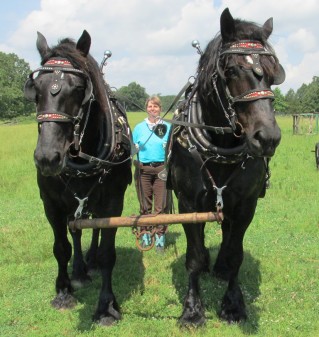 Ever since they were youngsters on opposite sides of the globe, Kirsten and Albert Kosinski dreamed of being farmers. After decades of living in metropolises that included Los Angeles and Detroit, Al and Kirsten’s mutual dream ultimately came true. Building a farmstead as newlyweds in their 40s and 50s required finding gentle, carefree livestock breeds and less physically demanding farming methods.
Ever since they were youngsters on opposite sides of the globe, Kirsten and Albert Kosinski dreamed of being farmers. After decades of living in metropolises that included Los Angeles and Detroit, Al and Kirsten’s mutual dream ultimately came true. Building a farmstead as newlyweds in their 40s and 50s required finding gentle, carefree livestock breeds and less physically demanding farming methods.
That was more than 10 years ago. Today the couple lives as sustainably as possible, raising hardy, heritage breeds of grass-fed Dorper and Katahdin/ cross sheep and purebred Katahdin sheep, Scottish Highland cattle, occasionally Cornish-cross chickens for meat, ducks, geese, Bourbon red turkeys, meat rabbits, a few laying hens and Alpine and Saanen dairy goats on a small Missouri homestead.
Their Black Bell Acres near Alton offers farm-fresh eggs, lamb, beef and occasionally a few kids. The Kosinski’s buck, Kaiser, sired our first kid, Cream.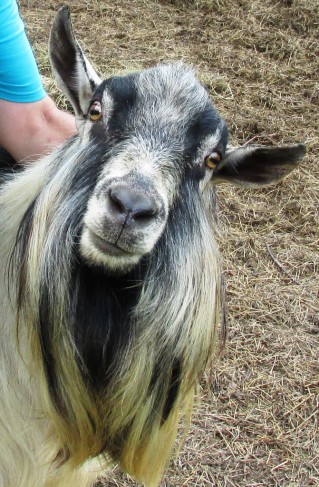
Kirsten, a native of Germany, did just about everything but farm before she met Al. Among other non-agricultural ventures, Kirsten owned and operated a chimneysweep company and worked a payphone route. Al, also a city dweller, retired after 30 years as a custodian in the school district of Birmingham, Mich.
Both, however, always envisioned themselves one day embracing a self-sufficient country life. Kirsten discovered Al’s aspiration for farming when helping him sort through three generations of accumulation after his parents’ deaths. Among the usual trinkets and treasures, Al had stacks of old Dairy Goat and Countryside magazines.
When Kirsten asked him about it, Al said he had never found anyone who wanted to embark on that journey with him. Their shared ambitions led to a life together and exodus from the city and all that such occupancy entails. The Kosinski’s first rural home was on 19 acres near Battle Creek, Mich., where they fell in love with draft horses.
The couple met a man at a Lansing draft horse show who said he would teach them to drive teams if they’d be willing to donate four weeks of weekends at his uncle’s Christmas tree farm.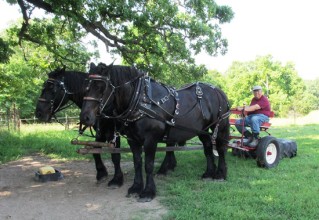
“I had a smile you couldn’t wipe away,” Kirsten told me of her and Al’s unforgettable experience driving wagonloads of visitors through the snowy pines. “People would ride around with us singing Christmas carols. We had a ball. They didn’t know we were green as grass.”
Kirsten laughs now how they would lay in bed in the evenings reciting harness parts, recalling their days as rooky teamsters. Not long after, they bought their first team and spent four days with the Amish, learning to use the horses to pull all types of farm implements. Good friends and neighbors were always available to help when needed.
Moving to Missouri required embracing another environment and community, both of which are vitally important to the Kosinskis. They believe in saving the Earth’s resources and helping their neighbors at the same time. Bartering is now a way of life. When it was time to remodel the kitchen, for example, they traded one of their Highland calves for carpentry work. They also are charter members of the fledgling Oregon County Food Producers and Artisans Cooperative.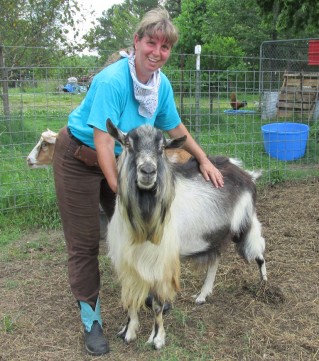
They do not vaccinate their animals, dock their tails or feed them grain. A 5-year-old llama protects the sheep from coyotes and leads the flock up to the barn at night. All the animals have a gentle disposition, even the rams, generally notorious for being among the meanest critters on four legs. Al and Kirsten can straddle the rams in the pasture and sit next to their Highland cattle in the shade.
“We raise everything without stress,” Kirsten said as she gave me a tour of their pastures in a cart behind Rowdy and Rambo, their 13-year old, 2,200-pound Percheron horses. The horses also help haul firewood and rocks and spread manure. “All of our breeding stock is tame. We believe the tamer and calmer they are, the better it is for everybody.”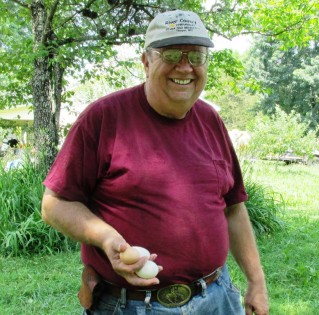
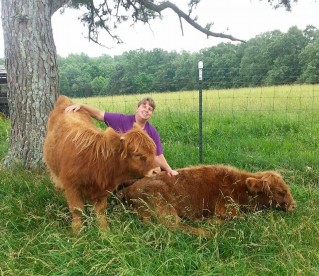
Kirsten says that because she and Al started farming later in life without an agricultural background, they selected breeds and keep only those they can manage in their golden years. They sell all of their meat animals “on the hoof” and deliver them to the local meat processor for customers. Besides being easy to handle, stress-free animals also are good producers of offspring, eggs, milk and tasty meat.
“We enjoy our life,” Kirsten said, adding that they left the comforts of the city without ever looking back.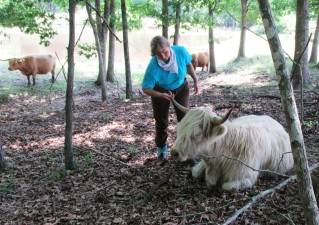
For more information about heritage breeds, see “Heritage Cattle and Chicken Breeds” and “Homesteading with Heritage Breeds” in Mother Earth News and the American Highland Cattle Association and The Livestock Conservancy.
